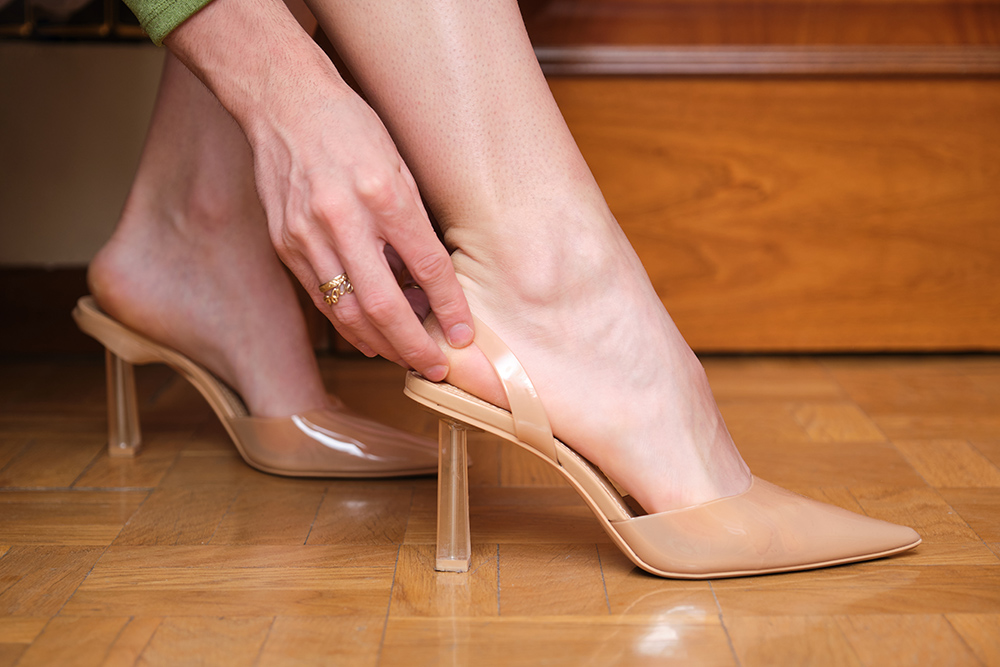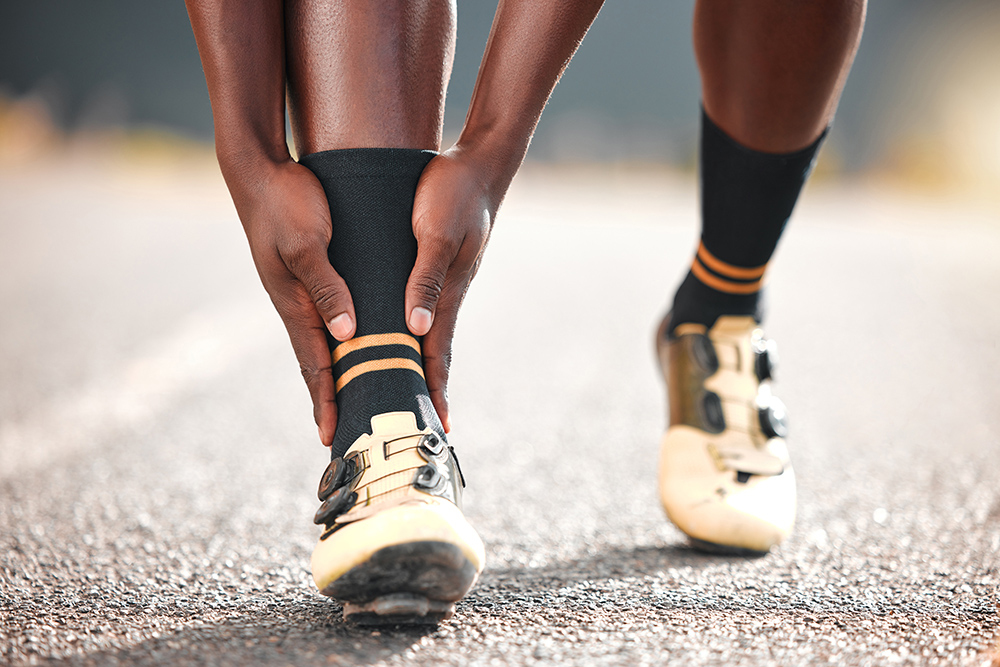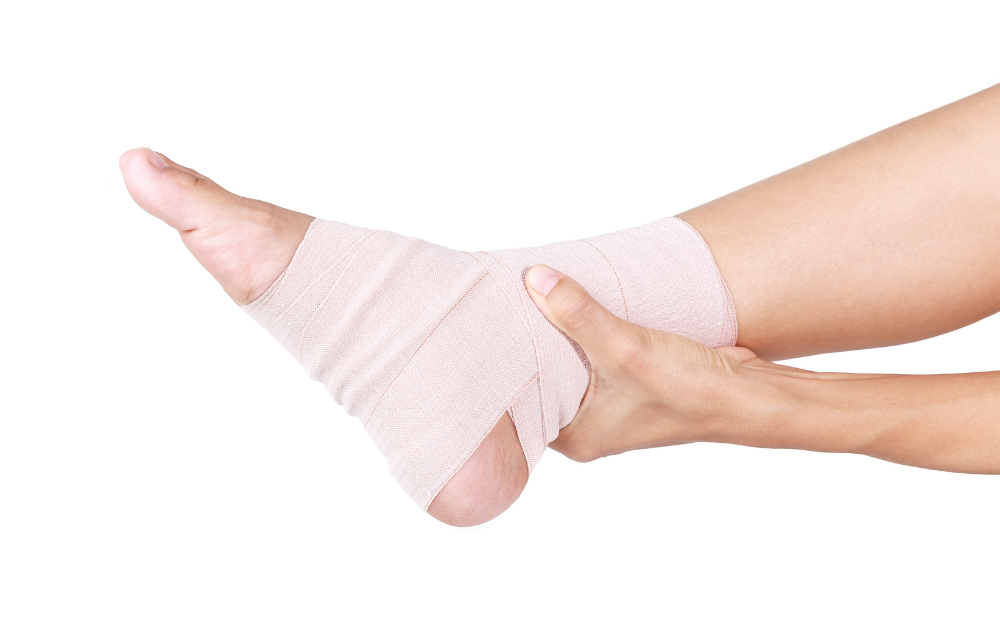Contents
Your feet are amazing structures made up of 26 bones, 33 joints, and over 100 muscles, tendons and ligaments. These intricate structures work together to support your body weight and enable you to stand, walk, run and jump. Your tendons, thick fibrous cords that connect muscles to bones, play an essential role in helping you move and stabilize your feet with every step. However, because they bear so much strain and pressure, tendons in the feet can be susceptible to injury and pain. When pain develops in these tendons, it can have a serious impact on your daily life, limiting your movement and overall quality of life.
If you’re dealing with foot tendon pain, understanding its symptoms and causes can help you find the best treatment option, which may include working with a physical therapist.
Symptoms of foot tendon pain
The symptoms of foot tendon pain can vary depending on the specific tendon affected and the severity of the injury or condition. However, foot tendon symptoms may include:
- Pain during movement — Pain can be felt when you put weight on your foot or try to move it. The pain may be mild and get worse with continued use. You may feel this pain on the top or bottom of your foot, depending on the affected tendon.
- Swelling and tenderness — The affected area may become swollen or tender to the touch. The swelling and tenderness can occur near the tendon involved. This could lead to pain on the top or bottom of the foot, depending on the affected tendon.
- Stiffness or limited range of motion — You may notice that your foot or ankle feels stiff, particularly after resting. Stiffness can make it hard to move or stretch the affected foot fully.
- Weakness — Tendon pain can lead to muscle weakness in the affected foot, making it hard to stand, balance or walk.
- Warmth or redness — Inflammation can cause the area around the painful tendon to feel warm or look red, indicating possible irritation or injury.
- Sensation of popping or snapping — Some people may feel or hear a popping sensation in the foot, which may indicate a tendon injury or tear.
These symptoms can vary from mild to severe and may limit your ability to do everyday activities such as walking, exercising or even standing for long periods.
10 potential causes of pain in the tendons of your foot
Foot tendon pain can be due to several causes, including:
- Tendinitis — Tendinitis occurs when a tendon becomes inflamed, often due to repetitive motions or overuse. Tendinitis can affect any tendon in the foot, but commonly affects the Achilles tendon (Achilles tendinitis), the posterior tibial tendon (posterior tibial tendinitis), and the peroneal tendons (peroneal tendinitis). Tendinitis is common among athletes, particularly runners, due to repetitive stress on the foot and ankle.
- Tendinosis — Unlike tendinitis, which is characterized by inflammation, tendinosis is a chronic condition involving the degeneration of the foot tendon over time. It can be the result of untreated or improperly healed tendinitis. Tendinosis can make tendons weak and more susceptible to further injury.
- Injury or trauma — Acute injuries, such as twisting or rolling the ankle, can strain or tear the tendons in the foot, leading to immediate pain and inflammation on the top or bottom of the foot and ankle. Injuries like these can happen during sports, exercising, or even from missteps on uneven surfaces.
- Overuse and repetitive stress — Certain activities or sports place continuous stress on the foot tendons, such as running, jumping or standing for long hours. Overuse and repetitive stress can lead to tendon irritation, inflammation and pain over time, particularly in occupations and sports that involve a lot of standing or jumping.
- Foot structure — Foot structure can play a role in tendon pain. People with flat feet or high arches tend to place different pressures on the foot and ankle tendons. Flat feet may lead to the overworking of the posterior tibial tendon, while high arches can place more strain on the Achilles tendon.
- Arthritis — Certain types of arthritis, like rheumatoid arthritis, can cause inflammation in the tendons as well as the joints, leading to pain and limited movement in the foot. Arthritis can make tendons more prone to injury and increase the risk of developing tendinitis.
- Footwear — Wearing improper or unsupportive footwear can contribute to foot tendon pain, especially if the shoes don’t provide enough arch support or cushioning. High heels and shoes with little arch support can strain the tendons, increasing the risk of inflammation and discomfort.
- Age and degeneration — As we age, tendons naturally lose elasticity and become more prone to injury. Age-related degeneration can lead to tendinosis or make tendons more susceptible to stress and strain.
- Infection — An infection can lead to tendon pain, particularly if it affects the surrounding tissue. Conditions like septic arthritis can result from bacterial infections that invade the joints and the tendons. Infections can cause significant pain, swelling and restricted movement in the foot.
- Medical conditions — Certain medical conditions, such as diabetes, can impact tendon health. Diabetes can lead to reduced blood flow and nerve damage, which may contribute to tendon pain. Conditions like hyperthyroidism can also affect muscle and tendon health, leading to weakness and pain.
Recognizing the cause of tendon pain in the foot is essential in choosing the right treatment approach and preventing further injury.
Physical therapy techniques for foot tendon pain
Physical therapy can be instrumental in treating foot tendon pain, offering techniques that improve flexibility, strength and mobility while reducing pain. Your physical therapist may use a variety of methods to relieve tendon pain and restore function. Based on your unique needs and concerns, they will create a personalized treatment plan and may use techniques such as:
- Manual therapy — Manual therapy involves hands-on techniques that target specific areas of tension or restriction in the muscles, including:
- Soft tissue manipulation — This approach involves your physical therapist using therapeutic massage and soft tissue techniques (kneading, pressure or gentle stretching) to address tight or inflamed areas around the tendons. Soft tissue manipulation helps relieve muscle tension, reduce inflammation and improve blood flow.
- Joint mobilization — Joint mobilization is a technique your physical therapist may use by applying controlled movements to the joints in the foot and ankle. This gentle approach helps improve joint mobility, reduce stiffness and alleviate pain.
- Trigger point therapy — Trigger point therapy targets specific areas of tightness or “trigger points” within the muscles around the foot and ankle. These points can refer to pain in the tendons, contributing to discomfort. Your physical therapist will apply pressure to these trigger points to release tension and restore normal muscle function.
- Therapeutic ultrasound — Therapeutic ultrasound uses high-frequency sound waves to promote healing in the tissue around the affected tendons. This technique can reduce inflammation, stimulate tissue repair and increase blood flow. The heat generated by ultrasound can also relax tight muscles, providing additional pain relief.
- Therapeutic exercises — Your physical therapist may also design a program of therapeutic exercises tailored to your specific needs. These exercises may focus on strengthening the muscles surrounding the foot and ankle, improving flexibility, and improving overall function. Strengthening the muscles can also lessen strain on the tendons. Exercises may include heel raises, ankle circles and gentle stretches. A regular exercise routine can help prevent future injuries and support the foot tendons in the long run.
- Aquatic therapy — Aquatic therapy takes place in a warm pool, where the buoyancy of the water helps reduce pressure on the joints and tendons. This allows you to do exercises that may be challenging or painful on land. The warm water can also help relax muscles, improve blood flow and reduce pain, making it an effective treatment option for foot tendon pain.
Foot tendon pain can make it challenging to do daily activities and keep you from enjoying sports or exercises. However, working with a physical therapist can help you find relief and gradually regain function through a personalized and supportive approach that addresses the root cause of your foot tendon pain.
Find relief from foot tendon pain with physical therapy at Lattimore PT
At Lattimore Physical Therapy, we understand how foot tendon pain can have a significant impact on your daily activities and overall quality of life. Our expert team is committed to providing personalized treatment plans tailored to your unique needs and concerns. By using effective physical therapy techniques, we aim to help alleviate your pain, improve your mobility and boost your functional abilities. Whether you’re recovering from an injury, managing a chronic condition or looking to improve your athletic performance, our compassionate approach ensures that you’ll receive the comprehensive care you deserve. Partner with us on your journey to recovery and move confidently again.
Contact our team today for more information or to schedule an initial appointment.



